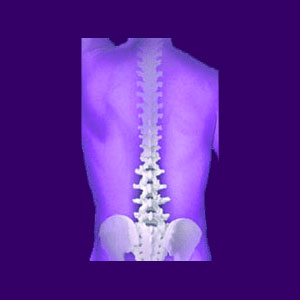
Ankylosing spondylitis symptoms vary greatly in intensity and expression. What holds true for one patient may be completely different for another. While symptomatic profiles may be very diverse, it is well known that AS always presents the possibility for disability and chronic suffering. That is why it is advisable to learn all you can about AS and its many possible expressions, in order to be fully prepared to battle the disease and emerge victorious.
Being that ankylosing spondylitis is an autoimmune disease, this means understanding and accepting that the symptoms are being generated by your own body. This can be emotionally torturous for many affected patients. Some can not help by feel that they are doing this to themselves, even if they can not consciously control it.
This dialog documents and explains the usual symptomatic expressions of ankylosing spondylitis, with a focus on spinal symptomology.
Ankylosing Spondylitis Symptoms Facts
Ankylosing spondylitis symptoms are not universal or predictable. Some patients may experience mild pains and functional impairments which may improve over time or worsen. Other patients may demonstrate the structural signs of AS, but not report any significant symptoms over timelines spanning many years. Still other patients are stricken with fast progressing AS which may become a huge health concern or may improve with time. There is no universal profile for AS sufferers, although research shows many cases escalate over about 10 years and then stabilize.
Many patients wind up at risk for other related health conditions or spinal injury, especially from unexpected trauma. Most AS patients are limited in what they can do, either by actual symptoms experienced or fear of causing damage to the spinal structures from rigorous and dynamic activity.
Remember, the individual levels of vertebral movement are often partially or completely lost in AS sufferers. Being that the spinal levels are naturally separated to absorb shock and provide a full range of motion, any trauma to a fused AS spine might result in severe injury.
Variety of Ankylosing Spondylitis Symptoms
Amkylosing spondylitis has a variety of symptoms which may be mild or severe, as well as progressing slowly or rather rapidly, depending on the patient. Some of the main symptoms of ankylosing spondylitis include:
Predisposition towards male patients in a 3 to 1 ratio over females.
Possible inflammation and irritation of the eyes.
Possible lifting or loss of finger or toe nails.
Possible visualized swelling in the joints, much like rheumatoid arthritis.
Possible history of colitis, fibromyalgia or other autoimmune concern.
Chronic stiffness and possibly pain in the back, hips, buttocks or pelvis. Pain may be severe and debilitating as joints fuse and mobility is limited.
The spine may become rigid and painful in virtually any position.
Symptoms of Ankylosing Spondylitis
Like all autoimmune disorders, ankylosing spondylitis can be a real enigma for doctors and patients alike. Being that the subconscious mind may play the primary role in causation and alleviation, the path of the disease is highly variable, as the underlying issues sourcing the symptoms vary in intensity and depth.
The possibility for a purely physical cause is still on the table for many doctors, but research clearly shows that AS, like most other autoimmune disorders, is likely to result partially or fully from the mindbody process.
This also explains why most physical treatments for ankylosing spondylitis fail miserably, while psychoemotional treatments, such as knowledge therapy, have been moderately to highly effective for some patients.
Back Pain > Ankylosing Spondylitis > Ankylosing Spondylitis Symptoms




